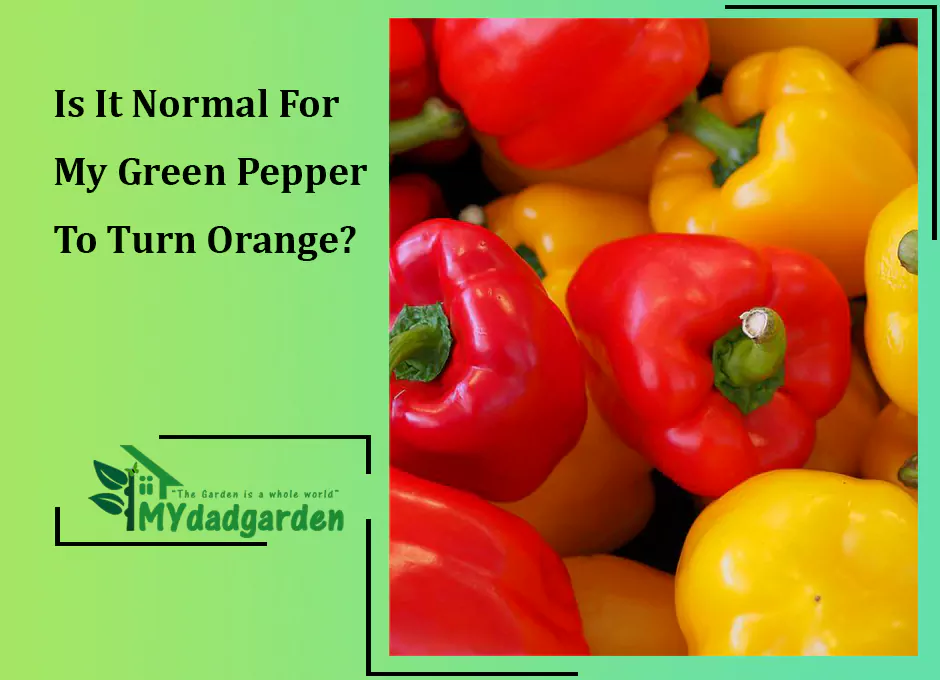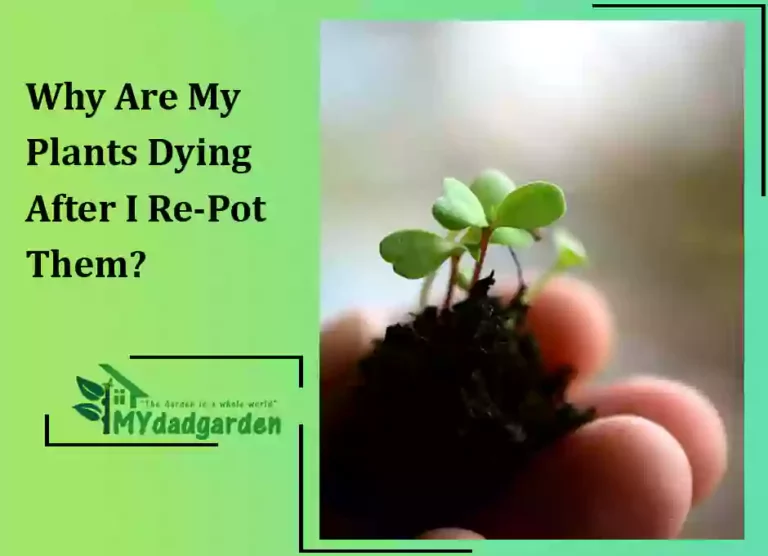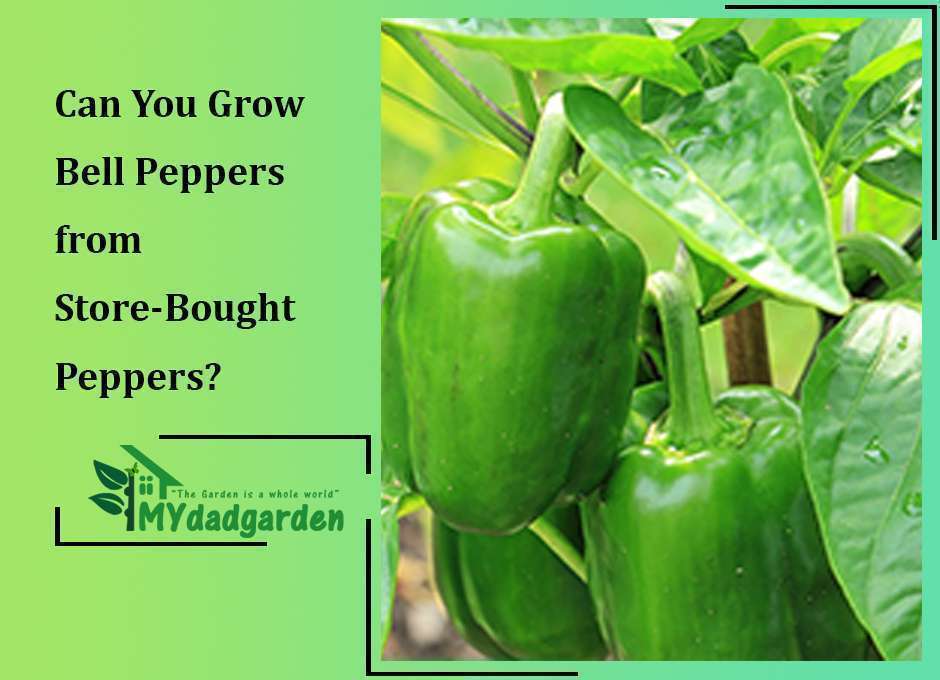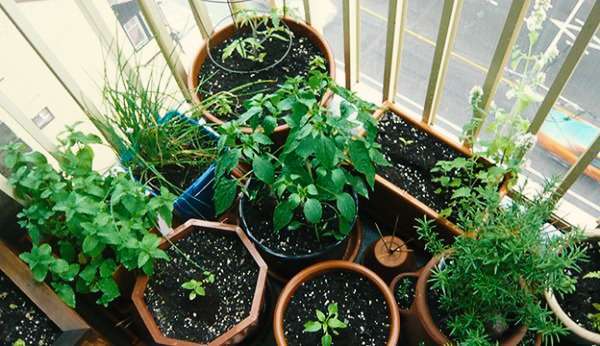Is It Normal For My Green Pepper To Turn Orange
If you’re a gardener, then you know that things can change rapidly in the garden. One day your plants are green and healthy, and the next, they turn orange or red.
All bell peppers begin life as green and eventually turn other colors. Depending on its variety, a green pepper could become yellow, orange, or red if it is not harvested. In this article, we will talk about why peppers are changing colors.
So is it normal for a green pepper to turn orange? Let’s find out.

Table of Contents
Why Is My Green Pepper Turning Orange?
While bell peppers are typically thought of as being red, they can actually come in a variety of colors, including green, yellow, and orange. Your green peppers can change their color to orange because of genetics and maturity.
The color of the bell pepper is determined by its genetics, with some varieties being bred to produce peppers that are more likely to be one color or another.
However, the color of bell pepper can also change as it matures on the plant. For example, a bell pepper that starts out green may turn red, orange, or yellow as it matures.
The longer a bell pepper stays on the plant, its flavor becomes sweeter. Bell peppers picked early in their development tend to be more bitter.
Conversely, bell peppers that are allowed to ripen fully on the plant will be sweeter and have a more complex flavor. In addition to sweetness, bell peppers that have been allowed to ripen fully will also have a higher nutritional value.

Why Are My Green Peppers Turning Red?
Your bell peppers are ripening, which is why they are turning red. When bell peppers are picked early, they are typically green in color. However, as they mature, most bell pepper cultivars go from green to yellow to red.
This change is due to the accumulation of carotenoids, pigment molecules that give bell peppers their characteristic color. In addition to providing visual appeal, carotenoids also have numerous health benefits. For example, they are a rich source of antioxidants and have been linked to a lower risk of cancer and other chronic diseases.

Why Does Green Pepper Turn Yellow?
Have you ever noticed that bell peppers start out as green, but if you leave them on the plant long enough, they eventually turn yellow? The same is true for other peppers – if you allow at least 30 days to pass, the pepper will change to the desired hue.
So why does this happen? It all has to do with the chemical composition of the pepper.
Peppers contain a pigment called chlorophyll, which gives them their characteristic green color. However, the chlorophyll begins to break down over time, revealing other pigments hidden beneath. This is why bell peppers will eventually turn yellow if left on the plant long enough.
So, don’t be alarmed if you’re seeing green peppers turn red in your grocery store. It’s perfectly normal for them to change color as they mature. In fact, it means that they’re becoming sweeter and more flavourful!
How Do You Know When Green Peppers Are Bad?
A well-known vegetable with many nutrients and minerals, including antioxidant capabilities, bell peppers are a good source of vitamins A and C.
People are currently perplexed about when and how to determine when bell peppers are bad. So, we’ll share a small secret with you today. We’ll go over the key indicators of rotten bell peppers. We’ll also discuss if green, yellow, and red bell peppers differ.

Smooth Appearance
A green pepper that changes in color is still edible, but the flavor of green pepper is lost. Ripe bell peppers have firm meat and skin that is wrinkle-free and taut. They also have a pleasant aroma that you can enjoy.
Fresh bell peppers, whether green, yellow, or red, have a shiny, smooth appearance. Because certain red bell peppers may have darker spots, color isn’t always a good signal, but these peppers are still safe to consume.
The presence of a yellow or red tint on some green bell peppers does not necessarily mean that they are rotten. The skin of a fresh pepper should be glossy and smooth, reflecting some light to give it a luminous aspect. Fresh bell peppers have a glossy, solid appearance.
When they are young, they are green and yellow. You may determine whether these peppers are rotten or moldy by touching them with your hands. The moment they turn yellow, crimson, or rotten, you should discard them. You should discard the bell pepper if it exhibits any of these symptoms of being bad, rotting, or moldy.

Tasty And Crunchy
As they mature, bell peppers, especially red ones, get sweeter. Orange and yellow bell peppers become sweeter, though not as much as red peppers, while green bell peppers keep their harshness.
A firm, sharp, snapping sound should be made when breaking a mature bell pepper. Peppers that aren’t fully ripe are harsh when you bite them because they are hard and flavorless.
Remember that red, yellow, or orange peppers purposely left unripe are known as green peppers. So it’s fortunate that they are not yet ripe.
The texture and appearance of pepper don’t always provide enough information to tell if it is rotten. People have gone as far as using it in their food to determine if they have used it. People have even gone so far as to incorporate it into their cooking to determine if they used a bad pepper.
A bell pepper that is rotting or moldy would likely taste bitter. Additionally, you should avoid keeping your bell peppers longer than essential. Bell pepper typically has a shelf life of three to four days, after which it should be thrown away if not consumed. Remember to consume it as quickly as you can. It is advisable to keep it in its original container for a few days before cooking to preserve it.
Soft spots
Soft patches can appear on peppers. If there are just one or two small soft patches, you can clip those out but if there are a bunch or the soft spot is enormous, toss it out.
FAQ
Do green peppers turn yellow then orange then red?
Green bell peppers are the first to show when they are growing on the vine. Their color changes from green to yellow, then from yellow to orange as they are allowed to mature and ripen. Their fully ripe, red color indicates that they have reached their maturity.

Can you eat green pepper that turns orange?
Yes, orange peppers are all safe and tasty to eat at any color stage, though the flavors sometimes intensify and sweeten as the fruits mature.
Previous Article: Why Is My Wandering Jew Plant Growing Upright?







